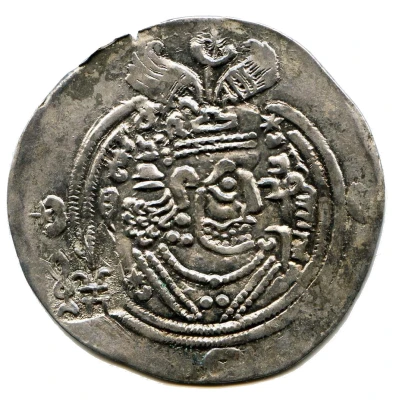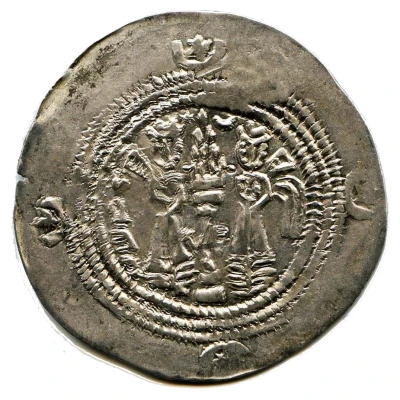


Drachm - Anonymous Sassanian style, Salm b. Ziyad-imitation
| Silver | 3.25 g | 32 mm |
| Issuer | Nezak Huns (Hunnic tribes) |
|---|---|
| Type | Standard circulation coin |
| Years | 680-682 |
| Value | Drachm (1) |
| Currency | Drachm (450-700) |
| Composition | Silver |
| Weight | 3.25 g |
| Diameter | 32 mm |
| Shape | Round (irregular) |
| Technique | Hammered |
| Orientation | Coin alignment ↑↓ |
| Demonetized | Yes |
| Updated | 2024-10-10 |
| Numista | N#151081 |
|---|---|
| Rarity index | 91% |
Reverse
Fire altar flanked by attendants; star and crescent flanking flames
Edge
Plain
Comment
In AH 61, Salm bin Ziyad was appointed Governor of Khurasan by the Umayyad caliph Yazid I. Three years later, bin Ziyad was deposed and replaced by ‘Abd Allah bin Khazim. The new governor quickly threw in his lot with the rebel faction led by bin Zubayr, dragging Khurasan into internecine conflict. Meanwhile, the Hepthalites took advantage of Arab distraction and invaded the region. In such a fractured state, Khurasan could not resist the Huns and the whole of the province fell under Hepthalite control for a brief period. This coin and related imitations (cf. CNG 60, 1090-6 and the following lot) were struck after the deposition of bin Ziyad in the same Khorasanian locality, by the same Sogdian speaking peoples. The group minting these imitations was plainly impartial to whether the prototype was Sasanian (with Khusro II types) or Arab-Sasanian, imitating either ‘Abd Allah bin Khazim or Salm bin Ziyad. However, the omnipresence of the tamgha and Sogdian legends (in countermark or engraveur) indicates that an association with Sogdian Hephthalite groups is the most important factor in the coins' identity.Interesting fact
One interesting fact about this coin is that it is an imitation of the Sassanian Empire's coinage, which was a common practice among neighboring tribes and kingdoms during that time period. The Nezak Huns, who issued this coin, were a Hunnic tribe that lived in what is now modern-day Kazakhstan and Uzbekistan, and they were known for their skill in metalworking and coin production. Despite being an imitation, this coin still holds significant historical value as it provides insight into the cultural exchange and trade networks that existed between different civilizations during the 7th century.